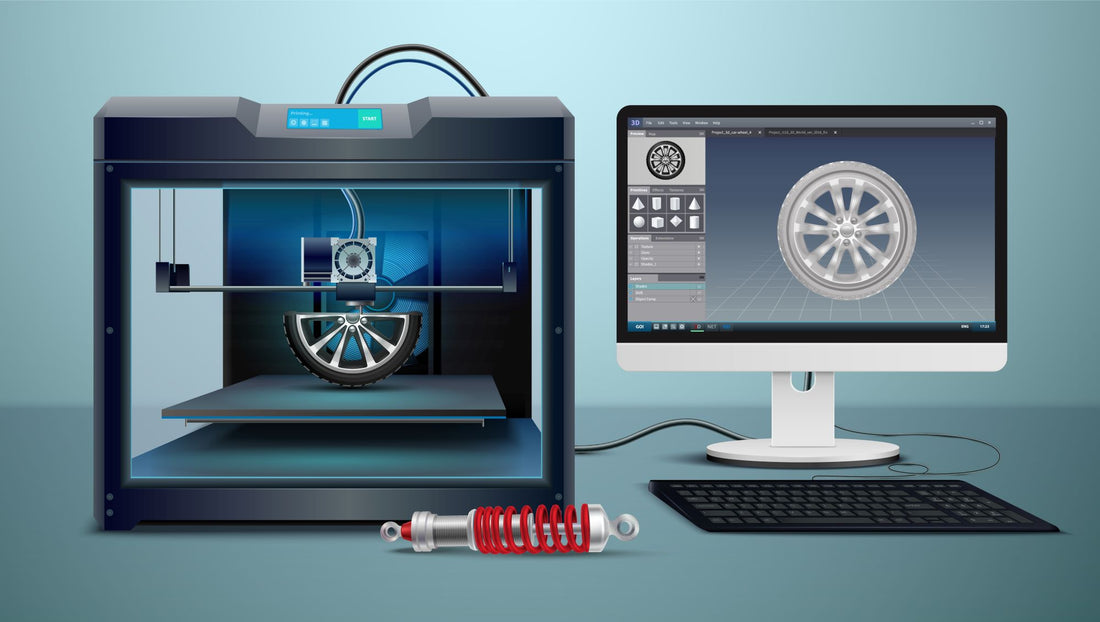In the world of manufacturing, two prominent technologies, 3D printing (additive manufacturing) and injection molding, vie for supremacy.
While injection molding has long been the go-to for mass production, 3D printing has emerged as a revolutionary alternative. In this blog post, we'll delve into the reasons why 3D printing is often perceived as more expensive than injection molding, and simultaneously, why its advantages make it an indispensable choice in certain applications.
The Cost Conundrum:
-
Material Costs:
Injection molding, at first glance, appears more cost-effective due to lower material costs. Bulk orders of raw materials for injection molding often come at a lower unit cost compared to the specialized filaments or resins used in 3D printing. However, this doesn't tell the whole story. -
Setup and Tooling:
Injection molding requires expensive molds and tools for each design, contributing significantly to initial setup costs. On the other hand, 3D printing excels in design flexibility, eliminating the need for expensive molds. While the initial cost of 3D printers can be higher, the absence of tooling costs makes it advantageous for smaller production runs or intricate designs. -
Labor Costs:
Injection molding and 3D printing involve skilled labor for post processing but only Injection molding requires skilled labor for setting up and maintaining molds which is a process that demands precision and expertise. 3D printing requires less manual labor in the actual creation of the item due to the printer being programmed to run autonomously once set up. This can reduce labor costs and make 3D printing more economically viable for certain applications. This is also why Contrive3D now offers 3D printing without the post-processing as it gets rid of a lot of the labor costs.
The 3D Printing Advantage:
-
Design Complexity:
3D Printing shines when it comes to intricate designs and complex geometries. Unlike injection molding, which may struggle with undercuts and intricate details, 3D printing can create intricate structures layer by layer, offering unparalleled design freedom. -
Rapid Prototyping:
3D printing allows for rapid prototyping, enabling designers to quickly iterate and refine their designs. This agility is a game-changer, especially in industries where time-to-market is critical. Injection molding, with its longer setup times, can't match the speed of 3D printing in the prototyping stage. -
Low Volume Production:
While injection molding excels in high-volume production, 3D printing is the go-to choice for low to medium-production runs. Its ability to produce small batches without the need for costly tooling changes makes it economically viable for niche markets or customized products. 3D printing is the way to go for small batch manufacturing and that is what Contrive3D specializes in. -
Reduced Waste:
Injection molding generates substantial waste during the setup and testing phases, as imperfect molds are discarded. 3D printing is more resource-efficient, as it produces minimal waste and can use recycled materials, aligning with sustainable manufacturing processes.
In the dynamic landscape of manufacturing, the choice between 3D printing and injection molding hinges on factors such as production volume, design complexity, and time constraints. While 3D printing may carry a higher price tag initially, its advantages in design flexibility, rapid prototyping, and suitability for low-volume production position it as a transformative force in modern manufacturing. As technology advances and economies of scale come into play, the cost dynamics may evolve, but for now, 3D printing's unique strengths make it an invaluable tool for those willing to embrace the future of additive manufacturing.
If you need prototyping or small-batch manufacturing check us out at contrive3d.com or contact us here.
Image from: freepik.com
Image by: macrovector

